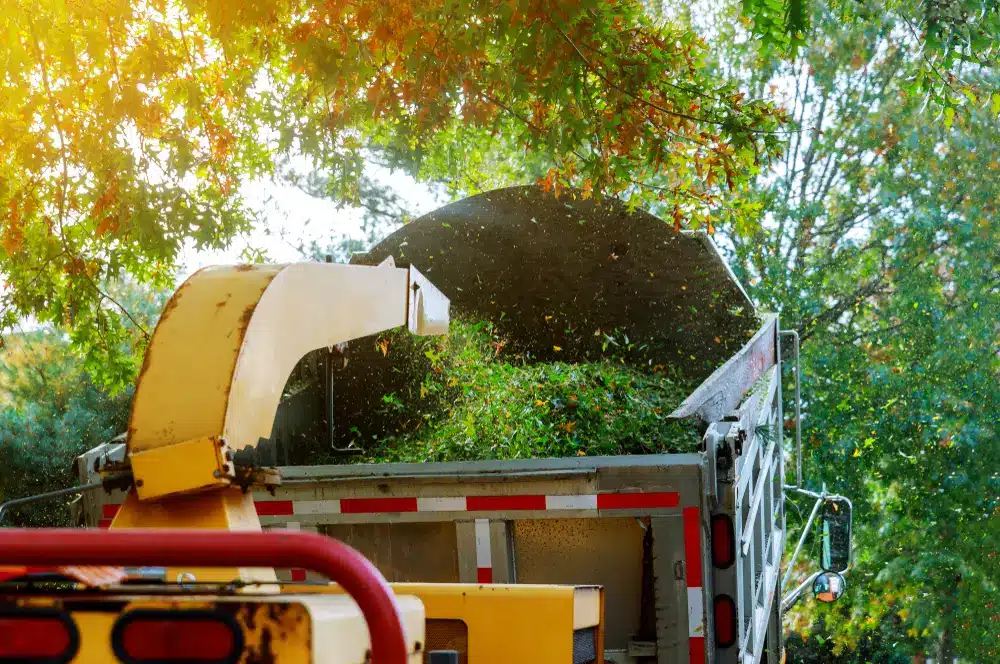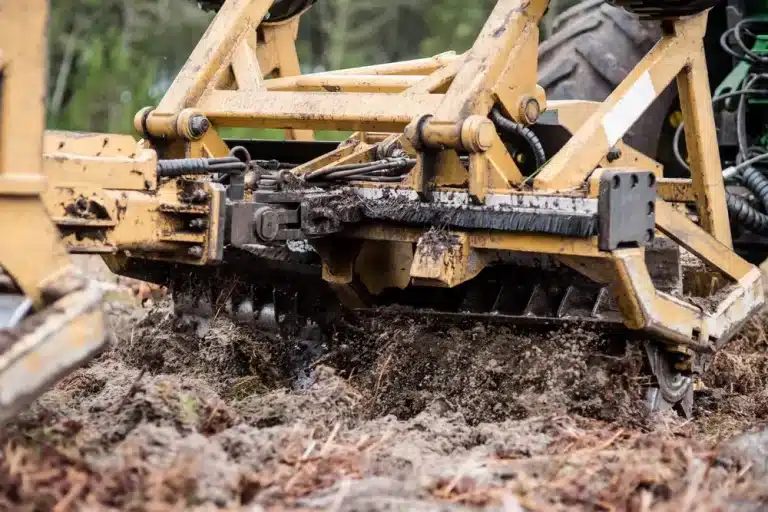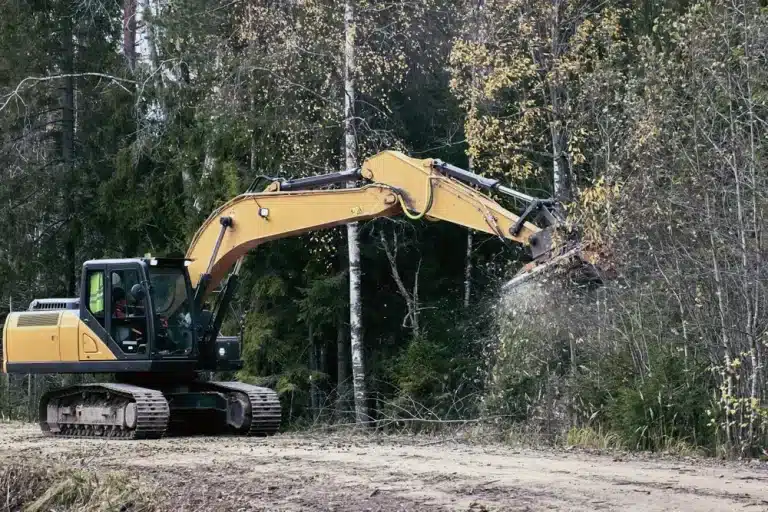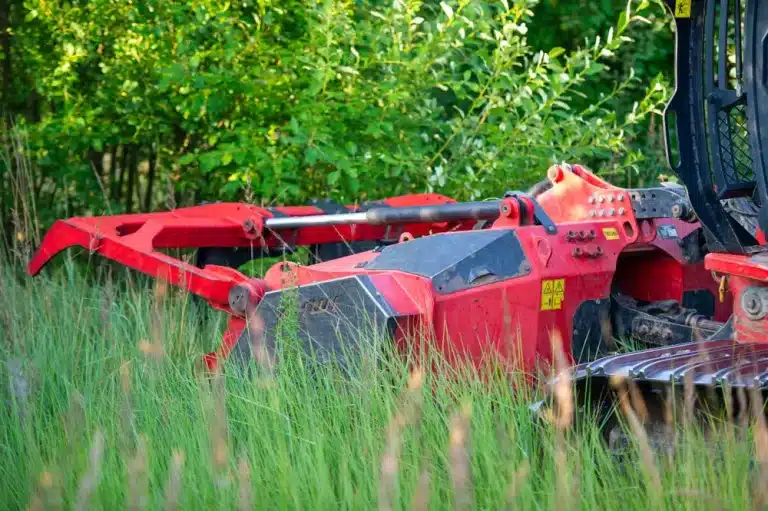In forestry, cleanup or disaster recovery operations, combining a mulcher and a chipper can dramatically improve results. Each tool plays a different role. Together, they help manage vegetation, process debris and adapt to site conditions. Choosing the right equipment depends on terrain, vegetation and project goals. Once mastered, this combination saves time and reduces effort across all phases of the job.
Understanding the distinct roles of mulchers and chippers
Mulchers and chippers serve different yet complementary purposes in forestry and land management. A mulcher grinds dense vegetation, brush, and small trees into fine mulch, leaving it on-site to stabilize soil and prevent erosion. In contrast, a chipper processes branches and wood waste into larger chips, making debris easier to transport, recycle, or repurpose as biomass fuel.
How mulchers prepare the ground for efficient clearing
Mulchers are the go-to solution for early-stage clearing. They tackle dense vegetation quickly and efficiently, even on steep slopes or irregular ground. This is especially useful when reclaiming overgrown fields, preparing remote sites, or maintaining access zones. The layer of mulch left behind reduces dust and prevents the ground from drying out, making it easier to work on later.
The role of chippers in processing wood waste
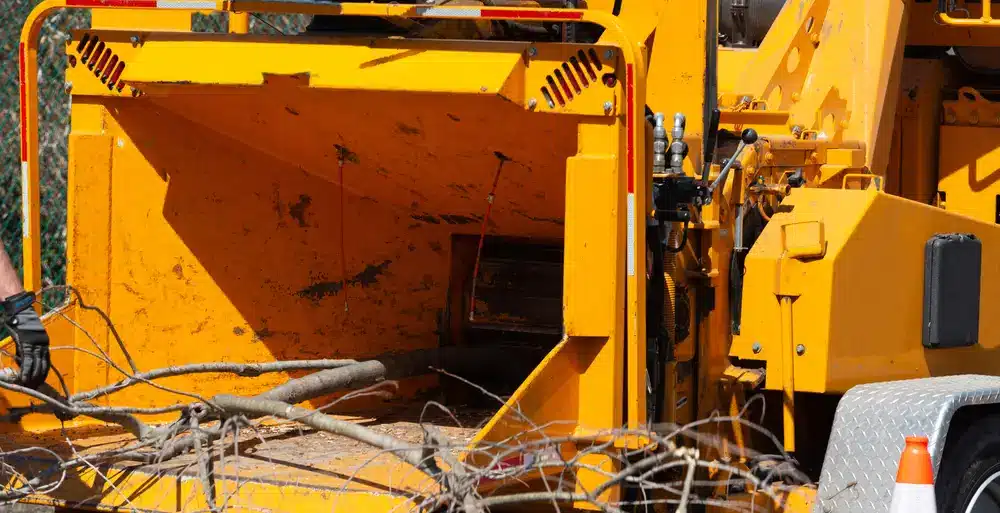
Once the ground is cleared and thick vegetation reduced, chippers come in to process what’s left. They handle long branches, fallen limbs, or any leftover wood that cannot be mulched efficiently. Chipping is often required in urban areas, on construction sites or along roads, where debris must be collected and transported. If your operation requires biomass output or tight perimeter control, chippers provide a clean and manageable finish.
Many emergency teams rely on this dual strategy. Learn more in our article on disaster response tools and how they integrate mulchers and chippers in crisis zones.
A combined workflow for better efficiency
Using both tools in the same operation is not only possible, it is often the smartest choice. Start with the mulcher to clear the terrain and reduce vegetation directly on site. Then switch to the chipper to handle the remaining branches and wood material. This reduces the need for manual transport, limits downtime and ensures a more thorough job.
Our use cases page outlines how this workflow is applied by contractors, public services and land managers across the country.
Typical workflow integration
- Mulching Phase: the mulcher clears and levels terrain, shredding vegetation into nutrient-rich mulch that stays on-site.
- Chipping Phase: the chipper processes larger branches and wood debris, preparing it for transport or reuse.
This method adapts to changing site conditions, ensuring no time or resources are wasted.
When to switch between tools
- Mulching is best for initial clearing, especially on rough or sloped terrain where debris hauling is impractical.
- Chipping is ideal when wood waste must be removed or repurposed, such as in urban or construction settings.
Selecting the right equipment for combined use
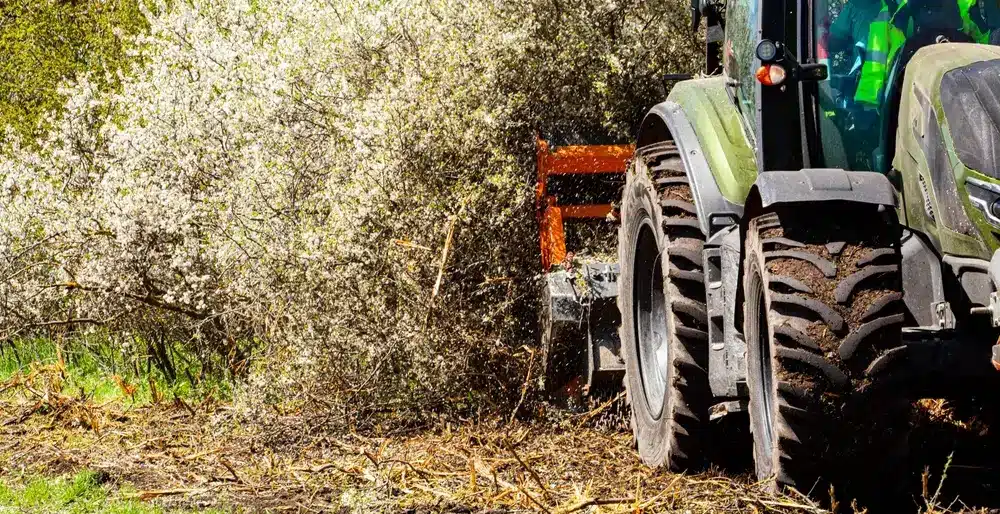
To get the best out of your tools, they need to match your machine. Whether you’re running an excavator, a skid steer or a spider machine, compatibility is key. That means selecting the right size, hydraulic flow and tool combination. Our page on how to choose the right mulcher for your machine provides detailed advice based on terrain, carrier type and expected performance.
If you need help selecting equipment for a mixed job, our team can support you with rentals, sales and long-term maintenance.
Key considerations when choosing your equipment
- Power requirements – Match machine capabilities to your carrier’s hydraulic flow.
- Terrain and vegetation type – Heavier mulchers handle dense growth, while high-capacity chippers manage large wood volumes.
- Maintenance and support – Reliable after-sales service and spare parts availability keep operations running smoothly.
Practical advice from field experience
We’ve spent over 15 years helping professionals find the right match for their site and machine. Our advice is based on real jobs, not just specs. If you need help to find which tool fits your needs or want to know if combining both is the right move, contact us and tell us about your project. You can also request a quote and get an expert recommendation tailored to your carrier and task.
